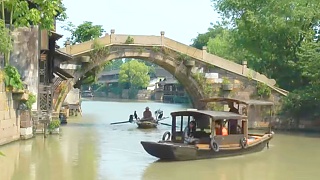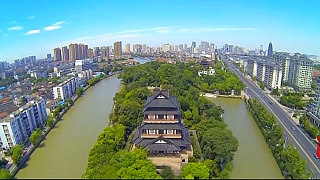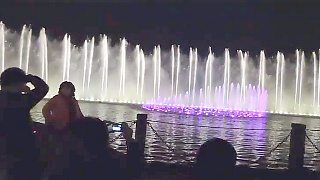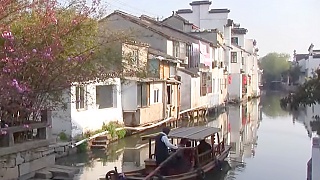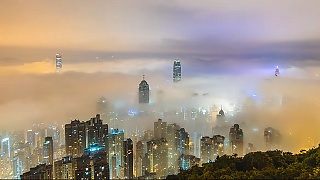
|
A documentary series by RT. Text by RT.
The Ancient Silk Road was a trade route that began in China in the 2nd century BC and, for more than 1700 years, linked Europe and Asia. As well as goods, it facilitated a cultural exchange between the continents, knowledge, religion, art, philosophy and tradition all passed back and forth between distant nations. Modern China now has the strongest economy in Asia and is a major world power. This series examines the enduring influence of the Silk Road in making the nation what it is today and how its legacy still thrives in China.
PART ONE
From the 2nd century BC onwards, the great Silk Road was a vital trade route that provided a link between Eurasian countries. It began during China’s Han dynasty and eventually stretched all the way to Rome. Throughout its 17 centuries of existence, it played a crucial role in enabling cultural interaction between nations and peoples all over the continents. As well as establishing economic ties, it also facilitated the exchange between countries of knowledge, religious practice, architectural styles, art, philosophy and traditions.
Modern Chinese culture has been heavily influenced by centuries of trade with neighbouring countries. Today, there are still sites in China that preserve the history of the Silk Road and the country’s role in it. Tang West Market Museum in the city of Xi'an marks the ancient starting point of the Silk Road and displays relics unearthed from what used to be a major centre for international trade. The Silk Route Museum in the city of Jiuquan celebrates the first ever customs checkpoint in history. This city served as an outpost on China’s border with unforgiving and perilous nomadic lands. Meanwhile, a network of grottos called the Mogao Caves bears witness to Buddhism arriving and thriving in China.
Today, China remains true to the well-established tradition of cultural exchange with its neighbours. 2016-2017 are dedicated to furthering Russo-Chinese relations and bilateral media ties. The history of collaboration between the two countries dates back as far as 400 years, when religious missionaries crossed the borders to introduce the other side to their homeland’s rich cultural practices.
PART TWO
China is developing a unique blend of socialism and capitalism. The state-owned sector dominates but there has been a sudden surge in privately owned businesses operating in a new market economy. The two systems coexist in apparent harmony despite the seemingly contradictory ideologies of capitalism and communism. Private businesses began to appear after the country’s economic reforms of the late 1970s, ushered in by then premier, Deng Xiaoping. The emergence of private entrepreneurship led to rapid economic development for China. The country is still among the world’s fastest growing economies and is often the first to tap into new markets.
To further expand its regional economic influence, China has launched a programme to revive the famous old Silk Road. They are confident that the route will develop new international markets and forge new business alliances. The multifaceted programme involves improving road infrastructure and modernising key cities along the ancient Silk trading route. They are also creating more favourable conditions for business with incentives like company tax breaks and duty-free towns near the borders with neighbouring countries.
The project has been dubbed the ‘One Belt, One Road initiative’, and involves cooperation with more than 60, mostly neighbouring countries, with Russia among the major partners. RTD examines examples of Sino-Russian cooperation carried out under the ‘One Belt, One Road’ umbrella, including large-scale government projects and private trade deals with Russian customers.
PART THREE
- The Ancient Silk Road was a major trade route that linked Europe and Asia between the 2nd century BC and the late 16th AD.
- Modern China is a rapidly growing economy. “One Belt, One Road” is an initiative to revive the Silk Road to help the country play a bigger role in global affairs.
- Ancient towns that were once key outposts on the Silk Road are undergoing rapid growth both economically and in infrastructure as they are to reprise their roles as major trading waypoints along the route
- Citizens now enjoy new business opportunities and contribute further to developing their cities
In its heyday, the ancient Silk Road was Eurasia’s most important trade route, connecting two rich continents to facilitate trade and cultural exchange. Modern-day China has seen near constant economic growth. It boasts of several record figures, including the highest number of skyscrapers and the longest railroads. Five years ago, the government announced a new plan, “One Belt, One Road”, an initiative to revive the Silk Road. The strategy seeks to help China play a bigger role in global affairs through developing an infrastructure that will unite the countries of the two continents under a cohesive economic area.
Many ancient Chinese cities that were once outposts along the Silk Road, desert oases or transport hubs are now rapidly transforming themselves into megacities, so that they can, once again, service and profit from the trade route. New businesses are opening, facilitated by the development of a reliable transport system, which in turn brings greater tourist flow. Some cities are also grated the status of special economic area, offering attractive tax incentives to foreign investors.
We visit two very different cities; Lanchjou and Urumchi, united by the Silk Road’s history. Both are experiencing rapid development. We meet businessmen who tell us how it feels to watch their home towns transform into economically and politically significant conurbations and how it inspires them to aim for international markets and seek new outlets for their businesses to grow.
|



